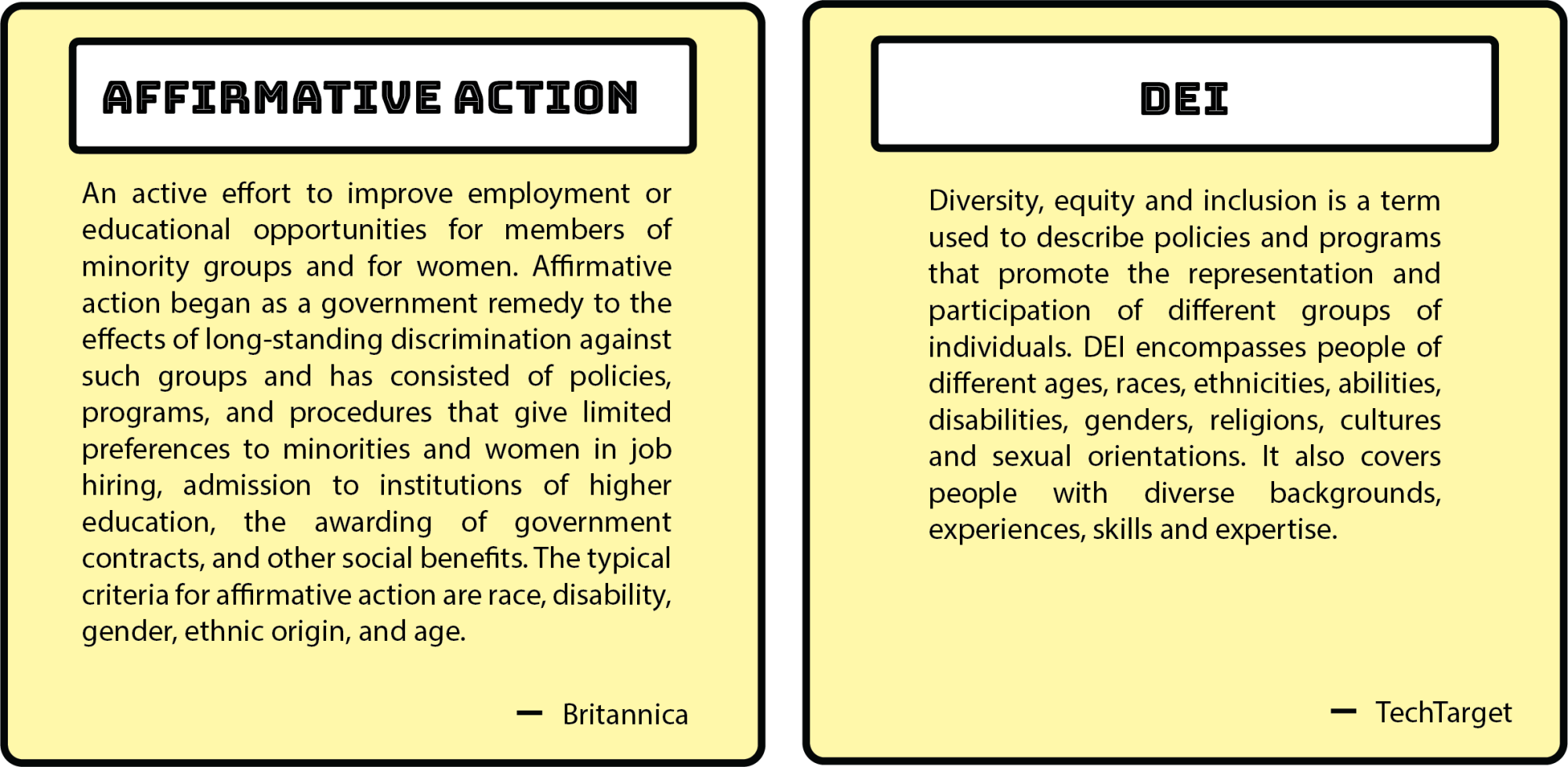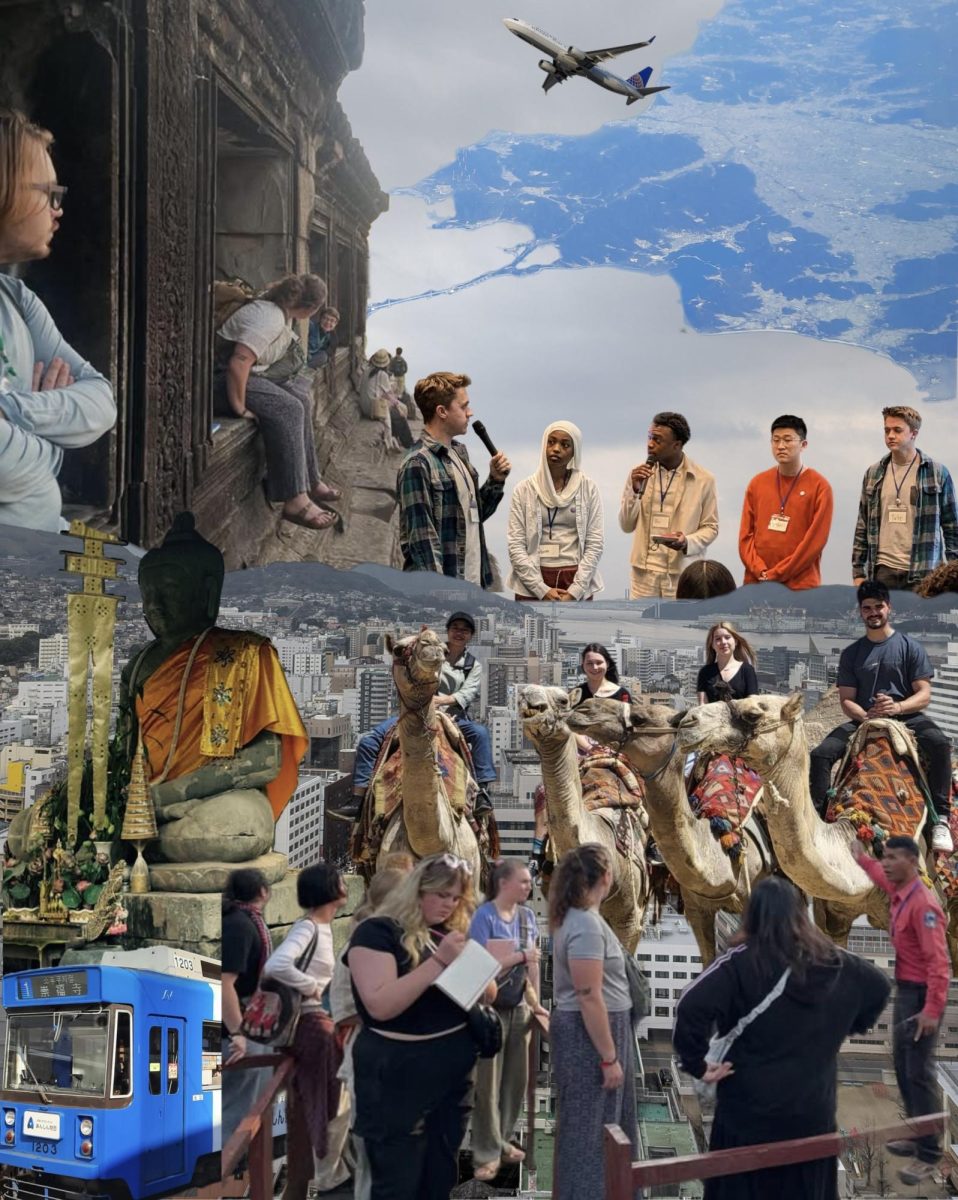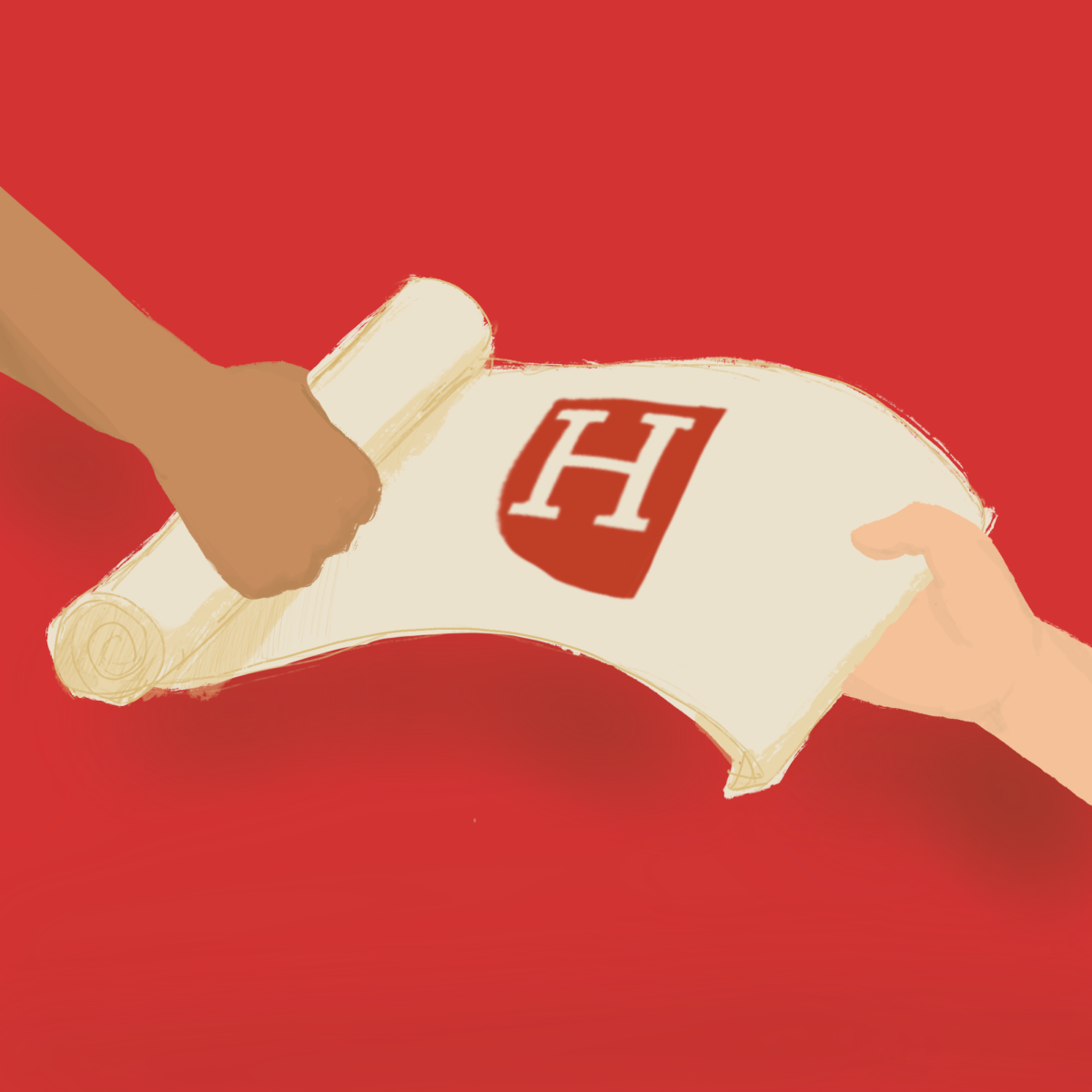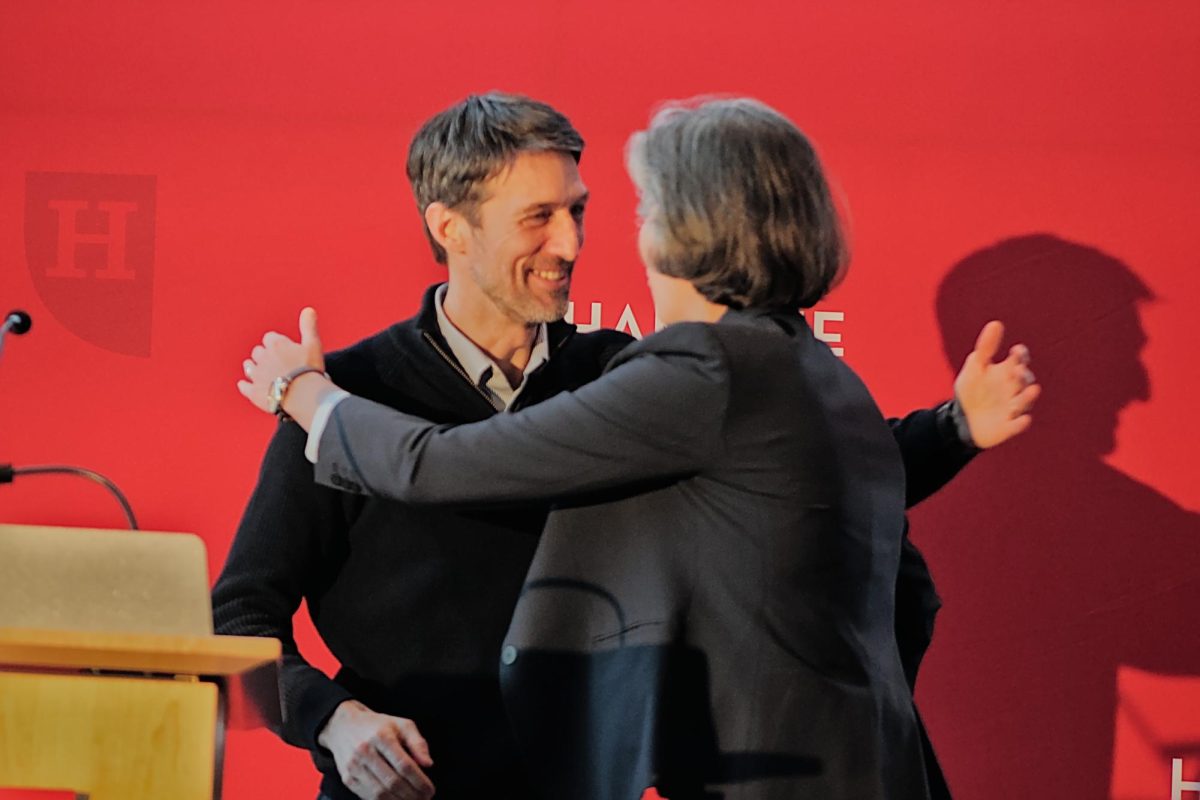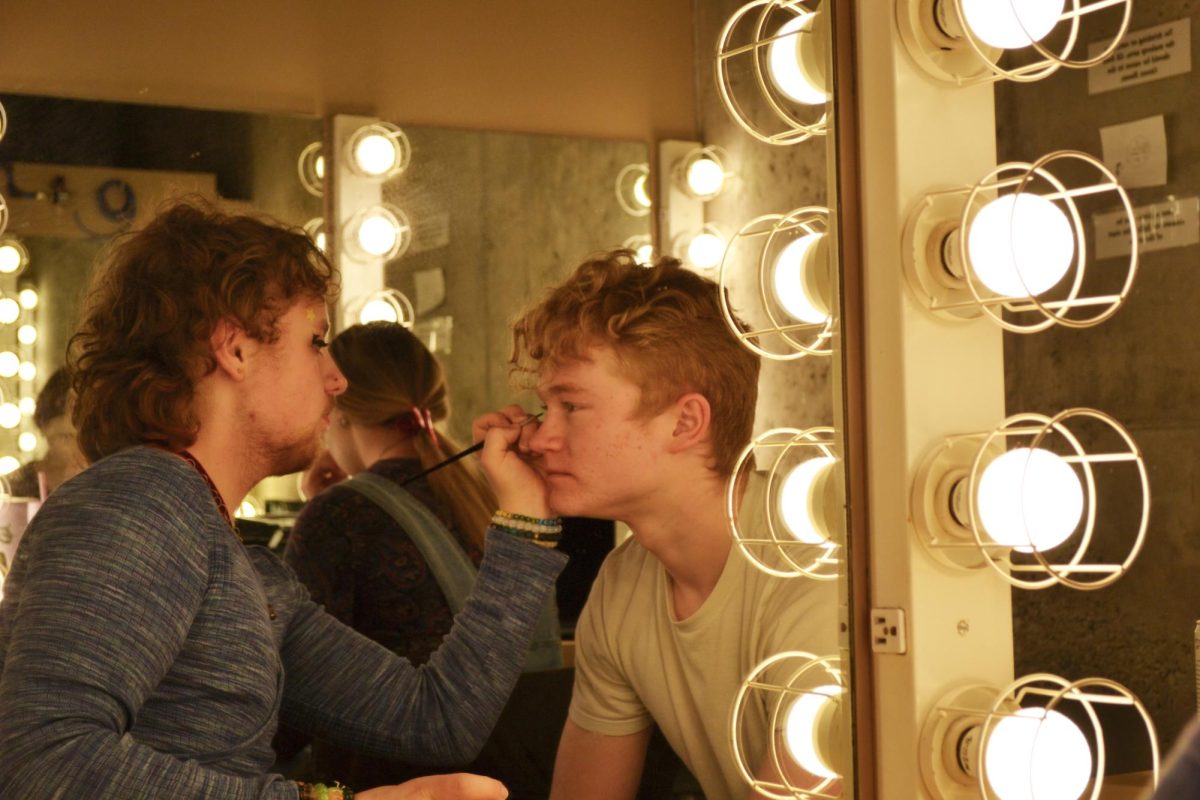With the projector screen out, fresh popcorn popping and a table full of candy, The Hive Collaborative was ready for takeoff. The documentary “Going to Mars: the Nikki Giovanni Project” was on deck for the night, with writer, arts and abolition organizer, cultural worker and film producer Erin Sharkey and multi-instrumentalist, vocalist, songwriter and music producer Mychal Fisher as the space commanders.
The “Writers Go To The Movies” (WGTTM) events consist of a writer choosing a film that has affected their thought process or writing practices. The writer then selects an “outsider artist” to join them in a deep, engaging conversation about the film. This concept allows art forms to connect artists from different disciplines.
Angela Pelster-Wiebe, a professor of Creative Writing at Hamline, hosted that night. She loves connecting community members with events such as WGTTM.
“I believe completely in the power of art to build community between disparate groups of people, and I’m eager to keep growing and nurturing relationships outside our campus. I couldn’t imagine a better neighborhood for Hamline University, and I feel really lucky to get to live in the place where I work–and organize these kinds of events alongside my fantastic colleagues in CWP and English,” Angela Pelster-Wiebe said.
Sharkey’s anticipation is high as she expresses the power of storytelling, voice and the magic of visual choices. Her background in various artistic productions also adds to her enthusiasm.
“I feel motivated and inspired when I watch films to think about how stories are structured around how voice comes through round image choices,” Sharkey said.
NIKKI GIOVANNI
Nikki Giovanni is a renowned poet and writer who led the Black Arts Movement in the 1960s and 1970s. Dubbed the “princess of black poetry,” her work uplifts and inspires Black Americans in the fight for equality.
Nikki Giovanni has been a constant presence in Sharkey’s life since she was a teenager.
“She has such clarity in her voice that is so strong and clear. And simple, but like in a way where they appear simple, but there’s so much underneath them,” Sharkey said.
Beneath that simplicity lies profound depth. Giovanni’s work resonates with Fisher and Sharkey because she’s a complex character. In her petite frame, she holds a huge impact. She advocates for happiness, yet it’s obvious she’s dissatisfied with the world. She challenges norms, and her commitment to joy is inspiring and thought-provoking.
SHARKEY X FISHER
Sharkey’s decision to bring along Fisher proved to be a great choice. Having known each other for almost ten years, they already knew they worked well together.
“I also thought Erin Sharkey and Mychal Fisher did a great job of thinking about the movie together outloud and in inviting the audience in to be a part of the discussion about Going to Mars,” Angela Pelster-Wiebe said.
When Hamline told Sharkey to choose an artist, there was no hesitation. Fisher makes music inspired by folk and funk traditions with R&B and Hip-Hop influences.
“He was the first person I thought of just because of his expertise, his nerdiness around film and also because of the music. The music in Going to Mars is really exciting. So I’m interested in what he thinks about the soundtrack,” Sharkey said.
The film has many things to do with travel and movement through spaces.
“There are lots of themes around isolation and solitude and his music helps me as I’m thinking about those themes,” Sharkey said.
Fisher and Sharkey are also developing a podcast to accompany Sharkey’s book, A Darker Wilderness: Black Nature Writing from Soil to Stars.
A jack of all trades, Sharkey also owns Rootsprings, a retreat center in central Minnesota that focuses on BIPOC and LGBTQ+ artists, activists and those looking for a community. Fisher has visited Rootsprings several times and even helps with footage and advertising. Allowing this safe place is crucial to BIPOC and LGBTQ+ communities.
“It’s good for our bodies, for our spirits, for our mental health, and for the ways that we interact with each other. We deserve that access,” Sharkey said.
THE FILM
Going to Mars is a visual feast. It unexpectedly weaves historical images, creating a beautiful tapestry of her life and work. The soundtrack adds another layer of beauty, with Fisher highlighting the importance of music conveying themes.
An exciting part of the film is how it incorporates clips of space travel into Giovanni’s life. This space theme is seen in her other works, such as in her book “Quilting the Black-Eyed Pea.”
“The trip to Mars can only be understood through black Americans. I say the trip to Mars can only be understood through black Americans,” Giovanni said.
In the film, Giovanni expresses that, similar to the desire to leave the Dark Ages, we must discuss emerging from the “White Ages.” This quote reiterates the foreign and extraterrestrial expressions in the film.
“Black people, and black women in particular, experience being aliens in a way that she’s fascinated with,” Sharkey said.
Giovanni is an enigma, often contradicting herself and rarely giving the response you’d expect from her. This contradiction was even discussed during the WGTTM conversation with Sharkey and Fisher, who were drawing attention to it and discussing their fascination with it.
“There’s so many moments where she even contradicts herself between different scenes. And there are moments when people ask her questions that feel like she should lean into them or that it feels kind of obvious. Like, of course, she has an opinion about that, where she rejects the question and says she doesn’t want to answer it,” said Sharkey said.
American writer and civil rights activist James Baldwin served as Giovanni’s mentor, and several parts of the movie give insight into their relationship.
“They’re sort of mentee-mentor relationship with this one that it’s really cool to see in the film because they still actively disagree with each other,” said Sharkey said.
Disagreement is rare in mentorship relationships. Baldwin’s authority as a mentor and an important figure in black literature could easily sway someone’s opinion. Giovanni’s sticking to her beliefs and questioning authority show she is genuinely passionate about her work.
“I really felt edified by their tension sometimes and trusting of what they think about things,” Sharkey said.
THE AUDIENCE
The discussion was a spectacle. Several audience members admired Giovanni’s work and Fisher and Sharkey for continuing to spread it. The conversations were full of different points of view and ideologies, keeping the topics fresh and eye-opening.
“I hope that the audience comes in with an open mind and that. And maybe [the film] offers a new direction to take their curiosity,” Sharkey said.
A professor of English and Communications at Hamline, Mike Reynolds, shared his appreciation for the engaged crowd and the depth of Giovanni’s work, passion, and purpose.
“…WGGTM does for me what Angela mentioned at the start of the event – putting artists who make in different ways into conversation together about a different artwork changes the way I see movies, and hear them, and in this case think back through Giovanni’s astonishing poetry. I feel like I walk out with a new pair of eyes, new ears, new tools to make sense or just to make things differently,” Reynolds said.
Because Nikki Giovanni brings a different perspective to some historical moments, the film left viewers questioning the tales they were always told about Black individuals. When it comes to black history, it is often flattened. The film strives to use archival images to create a different narrative around stories.
“I’m excited for different cracking opens of historical knowledge and creating more space for a more complex story because that’s actually, I think, what’s the most interesting is beyond the sort of basic story that we’ve gotten in the past,” Sharkey said.
Richard Pelster-Wiebe, director of Hamline’s Creative Writing Program, interpreted the event as a whirlwind of connection.
“I was standing in the back during the screening and the Q&A and it was like this utopian dream to see all of these different people, from different walks of life, come together to watch a movie and think deeply about art, activism, love and the meaning of life. There was a lot of laughter, too,” says Richard Pelster-Wiebe said.
The experience of WGTTM is like space travel, with the audience moving together through the odyssey of Giovanni’s life. Individuals enter this confined, dark space together and emerge as different people.
“We may not emerge as having the same takeaways or the same questions, but I’m excited for that. I think that’s one of the great things about a project like this,” Sharkey said.
Sharkey’s skills are becoming even more integrated into Hamline this Summer as she teaches “Writing With and About Art.” The spectacle that is Writer’s Go To The Movies enables the community to expand their knowledge and leave feeling even more connected to their peers. Sharkey and Fisher foster that type of humanity through their work and dedication to the arts.




